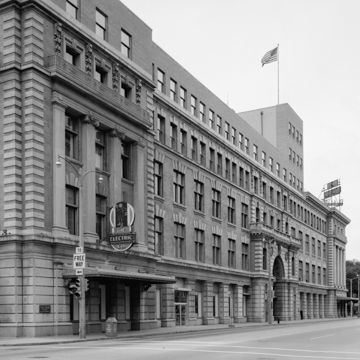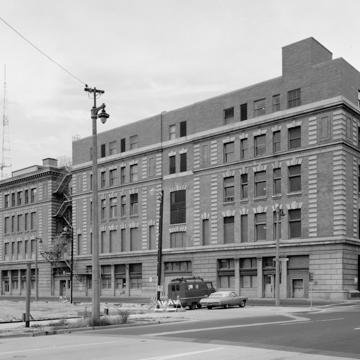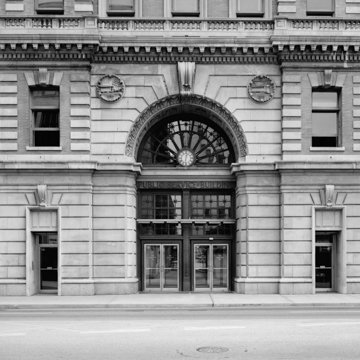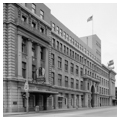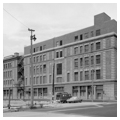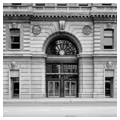This block-long neoclassical building was once the hub of Milwaukee’s interurban rail network. The electric trains, operated by the Milwaukee Electric Railway and Light (TMER&L) Company, connected downtown Milwaukee with suburbs and nearby cities. When the interurban line ceased in 1951, this building became a bus terminal until 1965. The Wisconsin Electric Power Company, successor to TMER&L, operates the building. Esser anchored the symmetrical facade on either end with projecting pavilions, and a central pavilion shelters the main entrance. The tall exterior piers, quoins, and keystoned windows compensate in monumentality for what the facade loses by repetition. Commuters entered through the grand arched limestone portal to meet their trains at thirteen tracks leading north to Sheboygan, west to Watertown, and south to Kenosha and Chicago. Italian marble covers the lobby floor, main staircase, and balustrades. Elevator cars have bronze doors and interior mahogany paneling, and gold leaf trims the multicolored plaster ceiling. Carved medallions in the entrance arch’s spandrels depict a horse-drawn streetcar in one and an electric trolley in the other. All these materials and details were meticulously restored in 1995–1997.
You are here
Wisconsin Electric Power Company (Public Service Building)
If SAH Archipedia has been useful to you, please consider supporting it.
SAH Archipedia tells the story of the United States through its buildings, landscapes, and cities. This freely available resource empowers the public with authoritative knowledge that deepens their understanding and appreciation of the built environment. But the Society of Architectural Historians, which created SAH Archipedia with University of Virginia Press, needs your support to maintain the high-caliber research, writing, photography, cartography, editing, design, and programming that make SAH Archipedia a trusted online resource available to all who value the history of place, heritage tourism, and learning.









